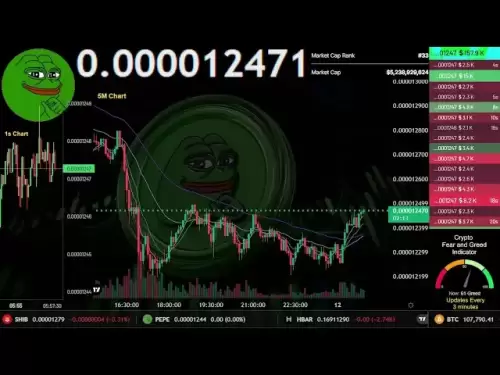-
 Bitcoin
Bitcoin $107,631.9817
-1.73% -
 Ethereum
Ethereum $2,739.1787
-4.61% -
 Tether USDt
Tether USDt $1.0000
-0.01% -
 XRP
XRP $2.2427
-3.30% -
 BNB
BNB $664.0527
-0.73% -
 Solana
Solana $158.0902
-5.38% -
 USDC
USDC $0.9998
-0.01% -
 Dogecoin
Dogecoin $0.1876
-7.78% -
 TRON
TRON $0.2753
-3.21% -
 Cardano
Cardano $0.6820
-5.55% -
 Hyperliquid
Hyperliquid $43.0171
-0.38% -
 Sui
Sui $3.3308
-4.87% -
 Chainlink
Chainlink $14.3431
-7.89% -
 Avalanche
Avalanche $21.0266
-6.48% -
 Bitcoin Cash
Bitcoin Cash $437.7657
-1.56% -
 Stellar
Stellar $0.2746
-2.52% -
 UNUS SED LEO
UNUS SED LEO $8.8665
-1.96% -
 Toncoin
Toncoin $3.1885
-3.37% -
 Shiba Inu
Shiba Inu $0.0...01260
-6.84% -
 Hedera
Hedera $0.1686
-4.93% -
 Litecoin
Litecoin $88.8406
-5.16% -
 Polkadot
Polkadot $4.0542
-6.28% -
 Monero
Monero $322.5806
-4.20% -
 Ethena USDe
Ethena USDe $1.0004
-0.02% -
 Bitget Token
Bitget Token $4.7089
-3.10% -
 Dai
Dai $0.9998
-0.01% -
 Pepe
Pepe $0.0...01206
-9.06% -
 Uniswap
Uniswap $7.8694
-5.20% -
 Pi
Pi $0.6232
-2.68% -
 Aave
Aave $301.3815
-3.83%
The moving average is arranged in a short position: Should I reduce my position in the rebound?
In a bearish market, traders should analyze volume, price action, and technical indicators before deciding to reduce a short position during a rebound.
Jun 10, 2025 at 03:22 am
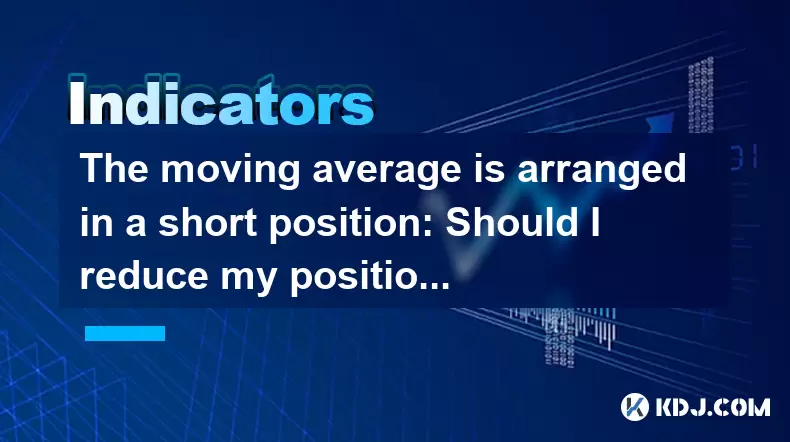
The moving average is a widely used technical indicator in the cryptocurrency trading world, helping traders identify trends and potential entry and exit points. When a moving average is arranged in a short position, it indicates a bearish trend in the market. This scenario can pose a dilemma for traders: should they reduce their position during a rebound? Let's delve into this topic to provide a comprehensive understanding and guide on how to approach such situations.
Understanding the Moving Average
The moving average is a tool that calculates the average price of a cryptocurrency over a specified period. There are different types of moving averages, such as the simple moving average (SMA) and the exponential moving average (EMA). The SMA gives equal weight to all prices within the period, while the EMA gives more weight to recent prices, making it more responsive to new information.
In a short position, the shorter-term moving average (e.g., 20-day EMA) is below the longer-term moving average (e.g., 50-day EMA). This arrangement suggests that the recent price action is lower than the longer-term trend, indicating a bearish market sentiment. Traders often use this signal to initiate short positions or to confirm their bearish outlook.
The Nature of Rebounds in a Bearish Market
Rebounds in a bearish market are temporary price increases that occur against the dominant downward trend. These rebounds can be misleading, as they might suggest a potential reversal of the trend. However, in a market where the moving averages are arranged in a short position, these rebounds are often short-lived and followed by further declines.
Understanding the nature of these rebounds is crucial for making informed trading decisions. Traders should not confuse a rebound with a trend reversal. A rebound is typically characterized by lower volume and less conviction compared to the prevailing bearish trend. Therefore, while it might be tempting to reduce a short position during a rebound, it is essential to consider the broader market context.
Analyzing the Rebound: Key Indicators to Watch
To decide whether to reduce a position during a rebound, traders should analyze several key indicators:
- Volume: A rebound with low volume suggests a lack of strong buying interest and is less likely to sustain. Conversely, a rebound with high volume might indicate stronger buying pressure, but it still needs to be considered in the context of the overall bearish trend.
- Price Action: Look at the price action during the rebound. Are there clear signs of resistance levels being tested and holding? If the price struggles to break through key resistance levels, it might indicate that the rebound is losing steam.
- Other Technical Indicators: Use other technical indicators like the Relative Strength Index (RSI) or the Moving Average Convergence Divergence (MACD) to gauge the momentum and strength of the rebound. If these indicators do not confirm the rebound's strength, it might be safer to maintain the short position.
Strategies for Managing a Short Position During a Rebound
When managing a short position during a rebound, traders can employ several strategies:
- Partial Profit-Taking: If the rebound is significant, traders might consider taking partial profits on their short position. This approach allows them to lock in some gains while still maintaining exposure to the bearish trend.
- Tightening Stop-Losses: Another strategy is to tighten stop-loss orders to protect profits. If the price breaks above a critical resistance level, it might be a signal to exit the short position entirely.
- Scaling Out: Traders can scale out of their short position by gradually reducing their exposure as the price rebounds. This method allows them to manage risk while still benefiting from potential further declines.
Practical Example: Managing a Short Position on Bitcoin
Let's consider a practical example of managing a short position on Bitcoin (BTC) during a rebound. Suppose the 20-day EMA is below the 50-day EMA, indicating a bearish trend. BTC then experiences a rebound, and the price increases by 5%.
- Analyze Volume: Check the trading volume during the rebound. If the volume is significantly lower than during the preceding downtrend, it suggests the rebound might be weak.
- Check Price Action: Look for key resistance levels. If BTC struggles to break through a resistance level at, say, $40,000, it might indicate the rebound is losing momentum.
- Use Other Indicators: The RSI might show that BTC is not overbought, suggesting the rebound still has room to run. However, if the MACD does not confirm the rebound's strength, it might be a sign to remain cautious.
Based on these analyses, a trader might decide to take partial profits on their short position, reducing it by 30%. They could then tighten their stop-loss to just above the $40,000 resistance level. If BTC fails to break through this level and resumes its downtrend, the trader can continue to benefit from the bearish move.
Emotional Discipline and Decision-Making
Emotional discipline is crucial when managing a short position during a rebound. The fear of missing out (FOMO) or the fear of losing profits can cloud judgment. Traders must stick to their trading plan and use objective data to make decisions.
It's important to remember that not every rebound will lead to a trend reversal. By maintaining discipline and adhering to a well-thought-out strategy, traders can navigate these situations more effectively.
Frequently Asked Questions
Q1: How can I differentiate between a rebound and a trend reversal in a bearish market?
A: To differentiate between a rebound and a trend reversal, look at the following factors:
- Duration and Strength: A trend reversal typically lasts longer and has stronger price movements compared to a rebound.
- Volume: A trend reversal is often accompanied by significantly higher volume, indicating strong market conviction.
- Technical Indicators: Indicators like the MACD and RSI should confirm the new trend. A trend reversal will show sustained bullish signals, while a rebound might not.
Q2: What are the risks of not reducing a short position during a rebound?
A: The risks of not reducing a short position during a rebound include:
- Potential Losses: If the rebound turns into a trend reversal, the price could rise significantly, leading to substantial losses on the short position.
- Missed Opportunities: By not taking partial profits during a rebound, traders might miss the chance to lock in gains before the price resumes its downward trend.
Q3: How can I use moving averages to confirm a trend reversal after a rebound?
A: To confirm a trend reversal after a rebound using moving averages:
- Crossover: Look for a bullish crossover where the shorter-term moving average (e.g., 20-day EMA) crosses above the longer-term moving average (e.g., 50-day EMA).
- Slope: The moving averages should start sloping upwards, indicating a shift in the trend direction.
- Price Action: The price should consistently stay above the moving averages, confirming the new bullish trend.
Q4: Can I use moving averages alone to make trading decisions during rebounds?
A: While moving averages are a valuable tool, relying solely on them for trading decisions during rebounds can be risky. It's advisable to use them in conjunction with other technical indicators and fundamental analysis to get a more comprehensive view of the market. This multi-faceted approach can help traders make more informed decisions and manage their positions more effectively.
Disclaimer:info@kdj.com
The information provided is not trading advice. kdj.com does not assume any responsibility for any investments made based on the information provided in this article. Cryptocurrencies are highly volatile and it is highly recommended that you invest with caution after thorough research!
If you believe that the content used on this website infringes your copyright, please contact us immediately (info@kdj.com) and we will delete it promptly.
- Expert Predicts When Bitcoin (BTC) Price Could Hit a New All-Time High
- 2025-06-13 02:00:20
- US President Donald Trump Virtually Spoke at the Coinbase State of Crypto Summit
- 2025-06-13 02:00:20
- Arctic Pablo Coin (APC) Explodes Onto the Meme Coin Stage as One of the Top New Meme Coins for Exponential Returns
- 2025-06-13 01:55:12
- Litecoin (LTC) Price Nosedives as Bollinger Bands Signal Lingering Bearish Sentiment
- 2025-06-13 01:55:12
- DeFi Development Corp. (DFDV) Secures $5 Billion Equity Line of Credit from RK Capital Management
- 2025-06-13 01:50:12
- Tether Expands Gold Strategy with Stake in Elemental Altus Royalties
- 2025-06-13 01:50:12
Related knowledge
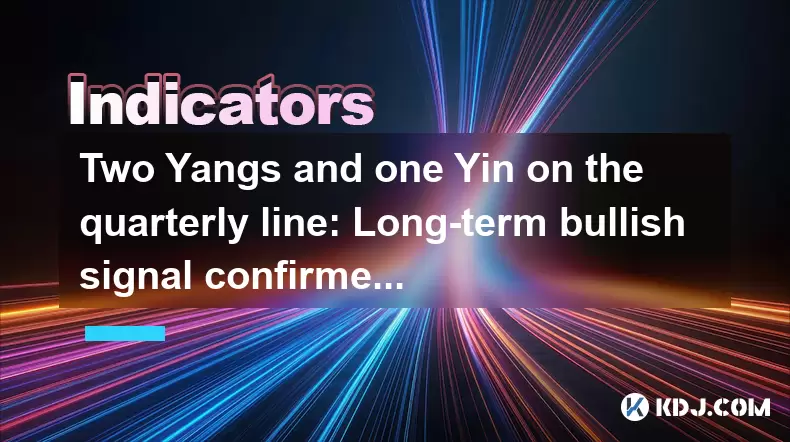
Two Yangs and one Yin on the quarterly line: Long-term bullish signal confirmed?
Jun 12,2025 at 07:00am
Understanding the 'Two Yangs and One Yin' Candlestick PatternIn technical analysis, candlestick patterns play a pivotal role in identifying potential market reversals or continuations. The 'Two Yangs and One Yin' pattern is one such formation that traders often observe on longer timeframes like the quarterly chart. This pattern consists of two bullish (...
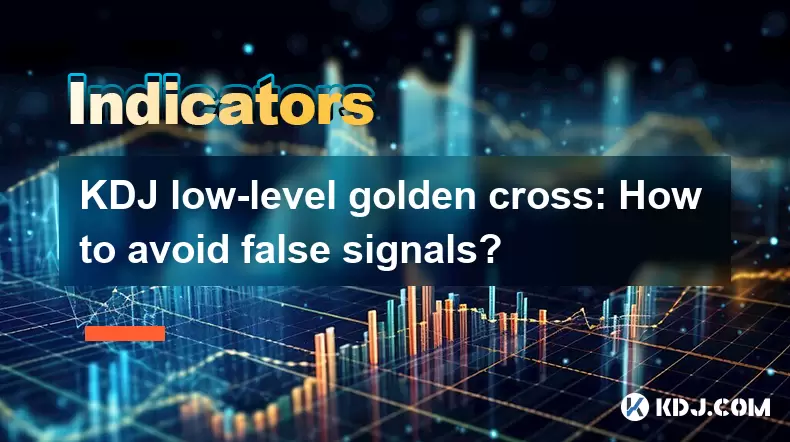
KDJ low-level golden cross: How to avoid false signals?
Jun 12,2025 at 08:21am
Understanding the KDJ IndicatorThe KDJ indicator, also known as the stochastic oscillator, is a momentum-based technical analysis tool widely used in cryptocurrency trading. It consists of three lines: the %K line (fast stochastic), the %D line (slow stochastic), and the %J line (divergence value). These lines oscillate between 0 and 100, helping trader...

Bottom-up volume stagnation: Is it accumulation or heavy selling pressure?
Jun 12,2025 at 01:42pm
What Is Bottom-Up Volume Stagnation?Bottom-up volume stagnation refers to a specific pattern observed in cryptocurrency trading charts where the price of an asset moves sideways or slightly downward, and trading volume remains consistently low over an extended period. This phenomenon is often seen after a sharp price drop or during a prolonged bear mark...
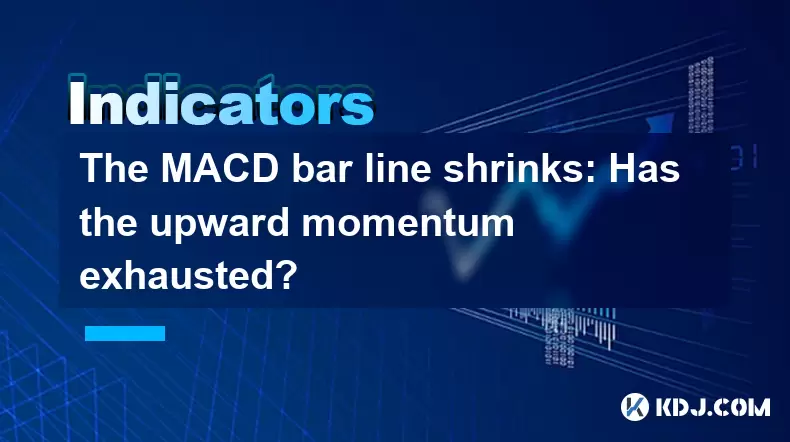
The MACD bar line shrinks: Has the upward momentum exhausted?
Jun 12,2025 at 12:49am
Understanding the MACD Bar LineThe Moving Average Convergence Divergence (MACD) is a widely used technical indicator in cryptocurrency trading. It consists of three main components: the MACD line, the signal line, and the MACD histogram (also known as the bar line). The MACD bar line represents the difference between the MACD line and the signal line. W...

The chip peak moves up: Is the main force quietly shipping?
Jun 12,2025 at 01:01am
Understanding the Chip Peak Movement in Cryptocurrency MiningIn recent years, the chip peak movement has become a critical topic within the cryptocurrency mining community. This phrase typically refers to the point at which mining hardware reaches its maximum efficiency and output capacity. When this peak shifts upward, it often signals changes in the s...
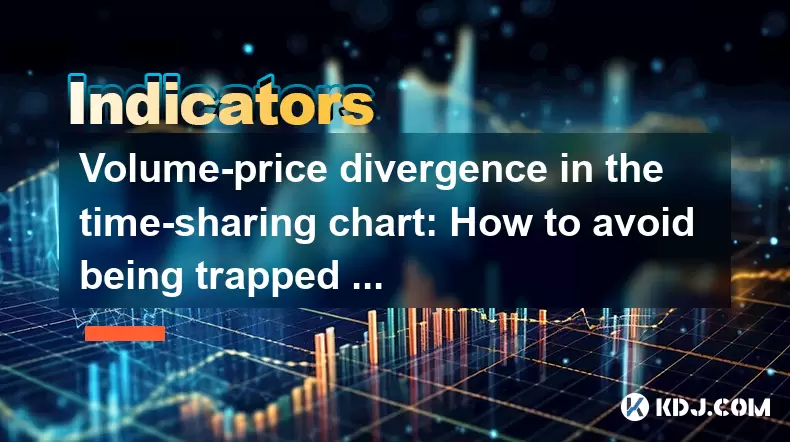
Volume-price divergence in the time-sharing chart: How to avoid being trapped on the same day?
Jun 12,2025 at 07:28pm
Understanding Volume-Price Divergence in Cryptocurrency TradingVolume-price divergence is a critical concept in technical analysis, especially within the fast-moving world of cryptocurrency trading. It refers to a situation where price movement and trading volume move in opposite directions. For instance, if the price of a cryptocurrency is rising while...

Two Yangs and one Yin on the quarterly line: Long-term bullish signal confirmed?
Jun 12,2025 at 07:00am
Understanding the 'Two Yangs and One Yin' Candlestick PatternIn technical analysis, candlestick patterns play a pivotal role in identifying potential market reversals or continuations. The 'Two Yangs and One Yin' pattern is one such formation that traders often observe on longer timeframes like the quarterly chart. This pattern consists of two bullish (...

KDJ low-level golden cross: How to avoid false signals?
Jun 12,2025 at 08:21am
Understanding the KDJ IndicatorThe KDJ indicator, also known as the stochastic oscillator, is a momentum-based technical analysis tool widely used in cryptocurrency trading. It consists of three lines: the %K line (fast stochastic), the %D line (slow stochastic), and the %J line (divergence value). These lines oscillate between 0 and 100, helping trader...

Bottom-up volume stagnation: Is it accumulation or heavy selling pressure?
Jun 12,2025 at 01:42pm
What Is Bottom-Up Volume Stagnation?Bottom-up volume stagnation refers to a specific pattern observed in cryptocurrency trading charts where the price of an asset moves sideways or slightly downward, and trading volume remains consistently low over an extended period. This phenomenon is often seen after a sharp price drop or during a prolonged bear mark...

The MACD bar line shrinks: Has the upward momentum exhausted?
Jun 12,2025 at 12:49am
Understanding the MACD Bar LineThe Moving Average Convergence Divergence (MACD) is a widely used technical indicator in cryptocurrency trading. It consists of three main components: the MACD line, the signal line, and the MACD histogram (also known as the bar line). The MACD bar line represents the difference between the MACD line and the signal line. W...

The chip peak moves up: Is the main force quietly shipping?
Jun 12,2025 at 01:01am
Understanding the Chip Peak Movement in Cryptocurrency MiningIn recent years, the chip peak movement has become a critical topic within the cryptocurrency mining community. This phrase typically refers to the point at which mining hardware reaches its maximum efficiency and output capacity. When this peak shifts upward, it often signals changes in the s...

Volume-price divergence in the time-sharing chart: How to avoid being trapped on the same day?
Jun 12,2025 at 07:28pm
Understanding Volume-Price Divergence in Cryptocurrency TradingVolume-price divergence is a critical concept in technical analysis, especially within the fast-moving world of cryptocurrency trading. It refers to a situation where price movement and trading volume move in opposite directions. For instance, if the price of a cryptocurrency is rising while...
See all articles





















